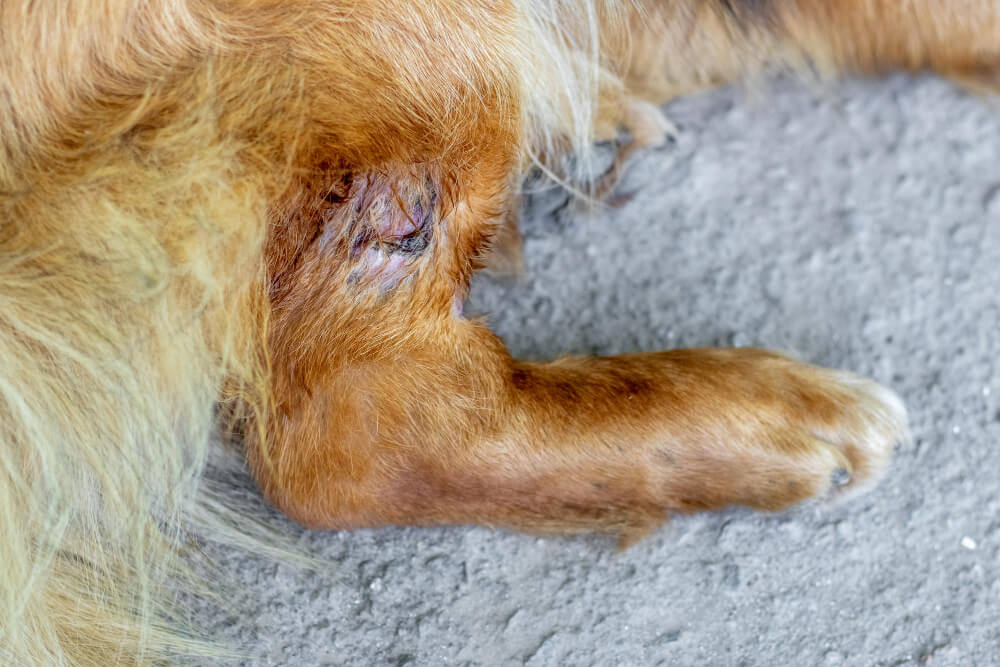Raynaud’s disease, a condition most commonly associated with humans, can also affect our canine companions. This rare vascular disorder impacts blood flow, primarily to the extremities, and can cause significant discomfort for your dog. Understanding its symptoms, causes, and treatment options can help ensure your furry friend stays healthy and comfortable.

What Is Raynaud’s Disease?
Raynaud’s disease, also known as Raynaud’s phenomenon, is a condition that causes the blood vessels to narrow in response to cold or stress. This reduces blood flow to areas like the paws, ears, and tail, leading to visible changes and discomfort. While it’s rare in dogs, it can still occur and requires careful attention.
What Causes Raynaud’s Disease in Dogs?
Raynaud’s can be primary (occurring on its own) or secondary (linked to an underlying condition). Some potential causes include:
- Cold weather exposure: Extreme temperatures can trigger vasoconstriction (narrowing of blood vessels).
- Stress or anxiety: Emotional stress can lead to episodes of reduced blood flow.
- Underlying health issues: Conditions like autoimmune disorders or circulatory problems can contribute.
- Genetics: Certain breeds might be predisposed, although this is not well-documented in veterinary medicine.
Signs and Symptoms of Raynaud’s Disease in Dogs
Recognizing the symptoms is crucial for early intervention. Here are the common signs:
Pale or Bluish Paw Pads
During an episode, your dog’s paw pads or other affected areas may turn pale or bluish due to reduced blood flow.
Cold Extremities
You may notice your dog’s paws, ears, or tail feeling unusually cold to the touch, especially in chilly weather.
Pain or Discomfort
Dogs might lick or chew at the affected area or seem hesitant to walk due to discomfort.
Color Changes
As blood flow returns, the affected areas may turn bright red before returning to normal.
Reluctance to Go Outside
If your dog associates cold weather with pain or discomfort, they may show signs of hesitation or anxiety when it’s time for a walk.

Diagnosing Raynaud’s Disease in Dogs
If you suspect Raynaud’s, schedule a visit with your veterinarian. Diagnosis typically involves:
- Physical examination: The vet will look for visible signs like color changes in the extremities.
- Medical history: Your dog’s exposure to cold, stress levels, and any underlying conditions will be evaluated.
- Blood tests: These help rule out secondary causes like autoimmune diseases.
- Circulatory tests: Specialized tests may assess blood flow to the extremities.
Treatment Options for Raynaud’s Disease in Dogs
While there is no outright cure for Raynaud’s disease, treatment focuses on managing symptoms and preventing episodes.
Protect Your Dog From the Cold
- Invest in dog boots to keep their paws warm during walks.
- Use sweaters or coats to protect your dog’s body in chilly weather.
- Limit outdoor time during freezing temperatures.
Stress Management
If stress triggers episodes, work on reducing anxiety through:
- Training and positive reinforcement.
- Calming aids like pheromone sprays or anxiety wraps.
- Consistent routines to help your dog feel secure.
Medications
In some cases, your vet might prescribe medications such as:
- Vasodilators: To improve blood flow.
- Pain relievers: To manage discomfort during episodes.
Address Underlying Conditions
If Raynaud’s is secondary to another issue, treating the root cause can help alleviate symptoms.
How to Prevent Raynaud’s Episodes
Prevention is key to keeping your dog comfortable. Here are some tips:
- Dress appropriately: Always use protective gear in cold weather.
- Provide warm bedding: Ensure your dog’s sleeping area is cozy and draft-free.
- Monitor stress triggers: Avoid situations that might stress your dog unnecessarily.
- Regular vet check-ups: Stay on top of your dog’s overall health to catch any contributing conditions early.
When to See a Veterinarian
Contact your vet if you notice:
- Persistent changes in color or temperature of your dog’s extremities.
- Signs of pain, such as limping, licking, or whining.
- Episodes becoming more frequent or severe.
Early intervention can prevent complications and help your dog live a happy, comfortable life.
Final Thoughts
Raynaud’s disease in dogs may be rare, but understanding its signs and taking proactive steps can make all the difference. With the right care, management, and a little extra warmth, your furry friend can continue to enjoy their daily adventures.
If you’re ever in doubt about your dog’s health, remember: it’s always better to be safe than sorry. A quick trip to the vet can provide peace of mind and keep your pup wagging their tail.
For more helpful tips on dog health and well-being, visit DogTalkBoy—where we’re passionate about your pup’s happiness!








